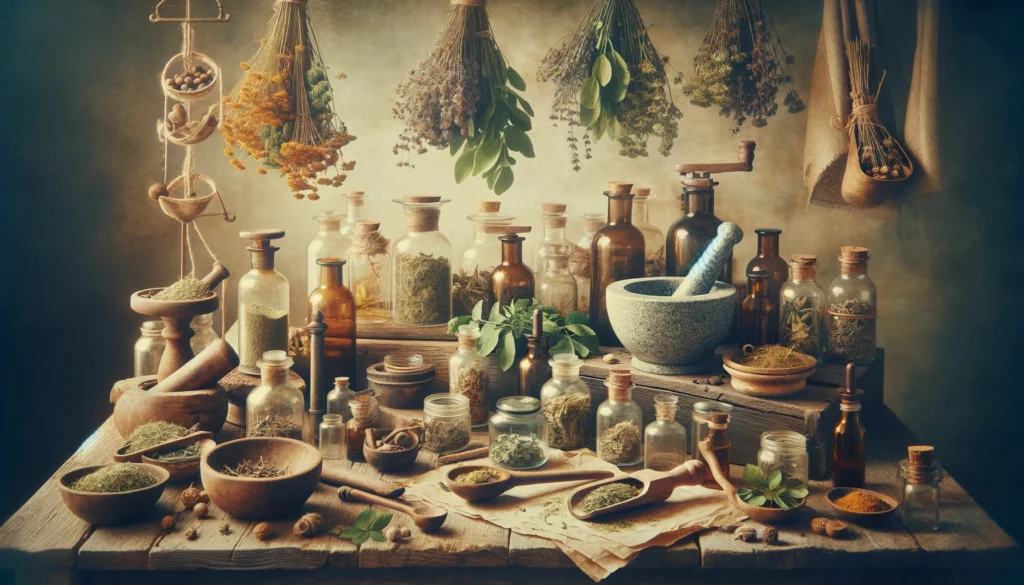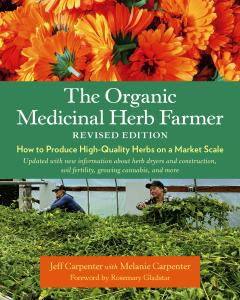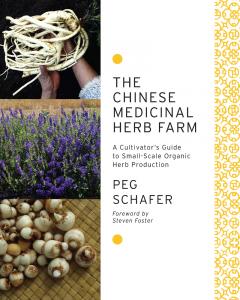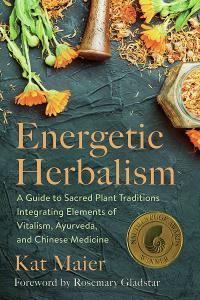Heirloom herbs are cultivated in gardens not just for their flavors but also for their natural medicinal properties that have been trusted for generations. These plants are not ordinary; they have been passed down from generation to generation and preserved from modern industrial farming practices. Their genetic makeup remains unaltered, and they have been used for centuries for their natural healing properties.
The advantages of cultivating these herbs are drawn from a deep well of historical and personal experience. These plants offer health benefits and the satisfaction of nurturing and utilizing what nature provides. Moreover, integrating heirloom herbs into daily life aligns with a sustainable and self-sufficient lifestyle, a principle gaining momentum in our society.
Heirloom herbs have played an essential role in medicine throughout human history, and this is not just folklore or a trend. Despite the availability of advanced medical technology today, people are increasingly turning towards natural remedies. Growing your own medicine empowers individuals and provides practical benefits. Herbs are useful for beautifying a space or adding flavor to a dish, but they can also help alleviate headaches, coughs, and boost the immune system.
Growing Healthy Heirloom Herbs
Growing heirloom herbs offers many benefits, particularly for their medicinal properties. For optimal growth, understanding and implementing basic cultivation techniques is essential. Healthy herb growth fundamentally starts with the roots, necessitating a focus on creating a nurturing environment for these plants.
To get the best performance from heirloom herbs, you must ensure they are in the right location and have fertile soil. Most herbs thrive in sunny spots and need at least six hours of direct sunlight daily. It is recommended to use well-draining soil rich in organic matter to prevent ‘wet feet’ and root rot, which can negatively impact their growth and potency.
The unique needs of different herbs serve as a guide for their maintenance. Peppermint, which tends to spread its roots, must be contained to prevent it from overrunning your garden. On the other hand, Calendula, with its vibrant and sunny blooms, is more adaptable and grows effortlessly, attracting bees and butterflies.
Lavender has a sunny disposition but requires proper lighting, while chamomile and garlic are hardier and can adapt to different conditions. Each plant has unique water requirements, companion plants, and placement needs that should be understood.
Focusing on sustainable organic practices is crucial when growing herbs for their medicinal properties. Synthetic fertilizers and pesticides may compromise the natural benefits of herbs, making it essential to opt for natural compost and eco-friendly pest control methods like introducing ladybugs or applying neem oil. These practices ensure the purity and effectiveness of the medicinal qualities of your herbs, aligning with the goal of promoting health and sustainability.
Harnessing Nature’s Pharmacy
If I say your garden can be more than just a source of aesthetic pleasure, believe me, it’s understated. Your garden has the potential to be your personal pharmacy, brimming with plants that have defended and cared for human well-being for centuries. Let’s explore how some of these heirloom herbs lend their power to us.
- Peppermint: Peppermint is one of the most energetic inhabitants of the herb garden, and it is recognized for its vigorous growth. However, don’t be discouraged by its enthusiasm. This herb has a cooling effect that can relieve stomach discomfort, clear sinuses, and alleviate headaches. A simple peppermint tea made from fresh or dried leaves can work wonders after a heavy meal or during a cold.
- Calendula: Calendula, also known as pot marigold, is a popular herb that has been used for medicinal purposes for centuries. Its bright, sunny blooms are not just visually appealing, but also beneficial in treating various skin conditions such as cuts, burns, bruises, and rashes. Calendula is also known for its anti-inflammatory and anti-fungal properties, making it an effective natural remedy for fungal infections and other skin irritations. Additionally, calendula’s vibrant petals attract helpful pollinators such as bees and butterflies, making it a valuable addition to any garden or landscape.
- Lavender: The soothing fragrance of this product not only relaxes the mind but also has a positive impact on the skin’s health. Its natural ingredients provide a calming effect, reducing stress and anxiety, while also nourishing the skin and promoting a healthy complexion.
- Chamomile: Chamomile is a herbaceous plant known for its medicinal properties. It can be easily grown from seed and produces small white flowers with a sweet aroma. Chamomile tea, made by steeping the flowers in hot water, is a popular natural remedy for sleep disorders and digestive issues. It can help induce relaxation and promote a restful night’s sleep, as well as soothe an upset stomach and relieve bloating and gas.
- Lemon Balm: This plant is commonly known as lemon balm and is a member of the mint family. It’s believed to have calming properties that can help to reduce anxiety and stress, making it a popular natural remedy for those struggling with sleep issues. Lemon balm is also said to have a mild sedative effect, which can help to promote restful sleep and improve overall sleep quality.
- Garlic: Garlic is a highly nutritious plant well-known for its medicinal properties. It is packed with antioxidants and sulfur compounds that help to boost the immune system and reduce inflammation. Additionally, garlic has antibiotic properties, making it an effective natural remedy for fighting infections. It can thrive in various temperatures and is adaptable to different soil types, making it easy to grow whether you live in cooler regions or enjoy a Mediterranean climate. With all its benefits and simplicity, garlic is a must-grow plant.
- Echinacea (Purple Coneflower): The purple coneflower, also known as Echinacea purpurea, is a stunning addition to any garden that adds aesthetic value and provides many health benefits. This herbal heavyweight has been widely studied and found to enhance the immune system, making it a popular ingredient in many supplements and wellness products. Additionally, the purple coneflower has a special relationship with pollinators such as butterflies and bees. Its bright and colorful petals serve as a beautiful lure for these insects, helping to support their populations while adding to the garden’s natural beauty.
It is essential to pay attention to how we cultivate and utilize herbs. The following section will cover transitioning from gardening to creating remedies so you have the necessary skills to turn these herbal plants into healing potions. Preparing the yields for medicinal purposes can be just as satisfying as watching them grow.

From Garden to Medicine Cabinet
Imagine a garden teeming with health and vitality, where each plant offers more than just beauty. How can these plants be transformed into daily wellness allies? That’s what will be shared with you here.
Timing is crucial when it comes to harvesting herbs. For instance, it’s best to collect herbs like calendula and lavender in the morning after the dew has evaporated but before the sun depletes their essential oils. On the other hand, peppermint and lemon balm are often best when they are in their tender stages and should be picked just as they start to flower. Finally, for roots like those of echinacea, it’s recommended to dig them up in autumn as this is when they contain the highest concentration of beneficial properties.
Preparing Herbal Remedies
To maximize the benefits of herbs, there are several common methods involved in processing them for use.
Drying: To dry herbs like sage and oregano, it’s best to hang them upside down in a warm and well-ventilated area. The reason for this is that by hanging them upside down, any moisture will be able to escape from the leaves and stems, preventing them from rotting. In addition, by drying the herbs in a warm and airy place, the oils that give them their distinct taste and aroma will be preserved. This is because the warm and dry environment will help to evaporate any excess moisture from the herbs, which will concentrate the oils and make them more potent. So, if you want to enjoy the full flavor and benefits of your sage and oregano, dry them properly in the right conditions.
Dehydrating: Dry herbs in a dehydrator at 95°F (35°C) for 4-6 hours until they are brittle. Store the dried herbs in an airtight container to use in teas.
Freezing: A great way to keep your herbs fresh for a longer period of time is by freezing them. You can do this easily by filling an ice cube tray with water or oil and adding herbs before placing the tray in the freezer. Once the cubes are frozen, transfer them to a freezer-safe container or bag for later use. This method is handy for herbs that tend to wilt or spoil quickly, such as basil, parsley, and cilantro. You can enjoy their fresh flavor and aroma in your recipes all year round by freezing them.
Infusing: Infused oils or vinegars can be created by placing fresh or dried herbs into a jar containing olive oil or vinegar (depending on the desired result). The jar should be sealed and left in a cool, dark place for a few weeks to allow the herbs’ flavors and medicinal properties to infuse into the oil or vinegar. After the herbs have been infused, the mixture should be strained to remove any solid particles or debris and stored in a clean, airtight container. Infused oils or vinegars can be used in cooking, salad dressings, or as a natural remedy for various ailments.
Tinctures: Alcohol or vinegar solutions are commonly used to extract and preserve the chemical compounds of herbs. These extracts are used in natural remedies, cosmetics, and food flavorings. The strength and quality of the extract depend on factors such as the herb used and the extraction method.
Salves: Making salves is a traditional way of encapsulating the healing properties of herbs into a topical application that is convenient to use. The process involves infusing oils with medicinal herbs and then blending the infused oil with beeswax to achieve a semi-solid state. This method helps to preserve the medicinal qualities of the herbs in the salve, which can then be directly applied to the skin to address various ailments such as dry skin, minor wounds, and irritations. Salves provide a natural and effective way to use herbs for healing and soothing.
Herb-infused oils and salves have direct benefits for our health. For instance, calendula salve can help soothe troubled skin, while garlic oil is a natural antibiotic preparation. Echinacea tincture, taken at the early stages of a cold, can boost the immune system, and a peppermint headache stick can provide instant comfort.
- The Organic Medicinal Herb Farmer, Revised Edition

- Merchant:Chelsea Green Publishing
- The Chinese Medicinal Herb Farm

- Merchant:Chelsea Green Publishing
- Energetic Herbalism

- Merchant:Chelsea Green Publishing
"Here's a little transparency: Our website contains affiliate links. This means we may receive a small commission if you click and make a purchase. Don't worry; there's no extra cost for you. It's a simple way you can support our mission to bring you quality content."
Storage and Testing
Storing these preparations is a simple but crucial task. It is important to use airtight containers such as amber glass bottles for tinctures and oils as they protect the contents from light damage. Labeling everything with dates and contents is also essential, as it can be easy to forget what's what after a few months.
Testing and moderation are two essential aspects that should not be underestimated regarding herbal regimens. Before fully committing to any herbal regimen, it is crucial to test and moderate it. This means starting with small amounts and gradually increasing the dosage to ensure compatibility with your body.
While allergies or adverse reactions are rare, they can still be experienced. Therefore, it is necessary to monitor your body's response to the herbal regimen and check for any signs of adverse reactions. Symptoms such as skin rashes, itching, nausea, vomiting, or any other unusual symptoms should be taken seriously, and the regimen should be stopped immediately.
Moreover, in case you have any pre-existing medical conditions or are taking any medications, it is essential to consult your healthcare provider before starting any herbal regimen. They can guide you on the safety and efficacy of the herbs and their potential interactions with other medications.
In conclusion, testing and moderation are crucial regarding herbal regimens. By taking these steps, you can ensure that you are taking the right herbs for your body and avoid any adverse reactions that may occur.
As you tend to your garden throughout each season, you'll have a variety of plants and a range of homemade remedies always at your disposal.
Please read my post on The Essential Guide To Heirloom Plant Care And Propagation for a more holistic view.
Embracing Herbal Traditions: The Future of Heirloom Herbs in Wellness
I strongly believe in the power of ancient wisdom, particularly regarding health and wellness. Heirloom herbs are not only historically significant, but they also serve as a connection between past practices and future health innovations. As we move forward, it is essential to acknowledge these plants not just as a nod to tradition but as a critical component of a holistic approach to health.
The use of herbs in daily life is not a novel idea, but a resurgence is happening. Many people are opting for these plants for their medicinal properties, connecting the dots between traditional remedies and contemporary healthcare. It's a movement driven by a shared aspiration for a sustainable and healthy lifestyle.
Education is imperative as we welcome heirloom herbs into our lives. It's about learning the "how" and the "why". I encourage you to explore resources, consult with herbalists, or leverage community knowledge to learn the herbs you are growing at a profound level. Every plant has a unique story full of wisdom that can help us live better.
In today's world, where synthetic products are commonly preferred, heirloom herbs are gaining well-deserved recognition as a natural alternative. Their future in wellness looks promising not because they're a trendy option but simply because they work. These herbs have stood the test of time and have been used for centuries due to their effectiveness. By embracing their role in our wellness routines, we take an intelligent step towards whole health.
What are your favorite herbs for daily use? Share them in the comments and help us expand our herbal knowledge!

